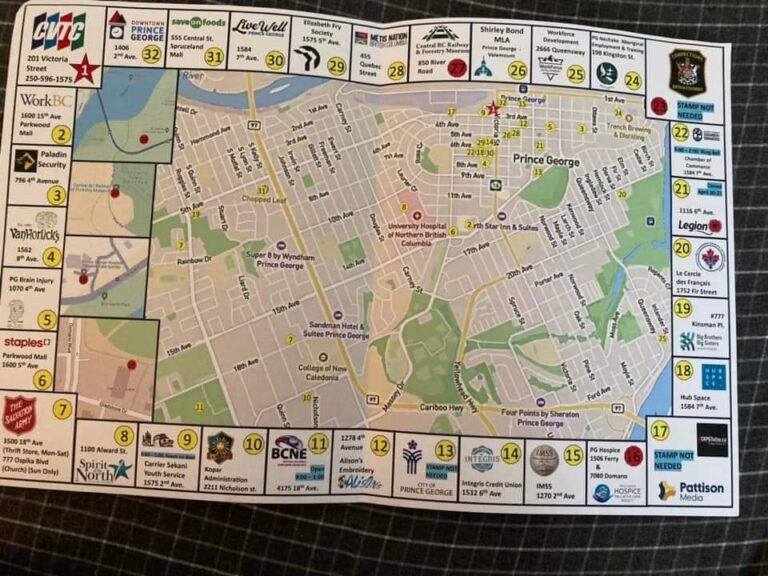It’s January now in northern BC, and that means that it is dark, snowy, freezing cold, and only sometimes sunny (and when it is sunny, it’s freezing cold!) It’s common to feel lackluster, bored, stale, frustrated, or annoyed by the weather, but for many people, these feelings move a few steps beyond just the winter blues.
Seasonal Affective Disorder, or SAD, is a type of depression that is linked to a lack of light found in the late fall and winter. It is also linked to the fact that the cold, snow, ice, and darkness make it harder to get out and exercise or socialize. The Covid-19 pandemic has certainly exacerbated this with any people getting sick, rolling restrictions on how many people can visit, and business closures. If you already deal with health problems like cancer, chronic pain, depression, anxiety, or other problems, SAD is just a miserable heaping of extra badness on top of a hill.
It’s estimated that between 10 and 20% of the population get ‘the winter blues’ which is just feeling vaguely bummed out in the winter (often after the holidays), while about 5% have SAD. This may not sound like much, but with a population of around 38 million, this means that almost 2 million Canadians suffer from SAD every year, and that’s just the numbers we know about since plenty of people don’t disclose mental health issues.
What are the symptoms of SAD and how can it be managed, particularly if you are on a tight budget right now and don’t have the time or money to get a lot of therapy or expensive light boxes?
Symptoms of SAD
SAD is now considered to be a form of major depressive disorder with a pattern tied to the weather/seasons. As such, the symptoms of SAD are very similar to MDD, but the symptoms will get better or worse depending on the time of year. These symptoms include:
- Anxiety that is disproportionate to the triggers
- Reduced libido
- Consistent low mood
- Irritable
- Feeling guilt or worthlessness
- Reduced concentration
- Sleeping too much or insomnia
- Increased appetite or no appetite
- Crying with no trigger
- Suicidal ideation
- Social withdrawal and reduced interest in activities that were once fun
SAD adds another layer to this because these symptoms feel worse in certain seasons and recede in others. It’s usually worse from fall to early spring and then mostly gone in the summer, but some doctors may also find it tied to seasonal employment where people don’t work for a season and feel depressed as a result. SAD usually flares in the winter, but for some people, it flares in the summer!
What Causes Seasonal Affective Disorder?
It’s not entirely known what causes Seasonal Affective Disorder, but it’s thought to be tied to a drop in sunlight which can have an impact on the brain. This can be due to a reduction in natural vitamin D (vit D is very important for brain development and most of our intake comes from sunshine), feeling isolated because it’s harder to get out, and reduced production of serotonin in the winter due to the need to protect the person against environmental stress in the winter.
Having a history of depression (either yourself or family members) also ups the risk and women are more likely to go through it than men, though it may be more a matter of women being more willing to disclose it than men.
Managing Seasonal Affective Disorder
If you are feeling severely depressed, we would strongly recommend that you talk to a doctor about managing the symptoms. There are clinics in town (Prince George) that are walk-in where you can at least start to get some help.
But if this isn’t an option for you, then here are some things that you can start doing from home to hopefully get enough energy together to start looking for more targeted help.
- Get all the sunlight you can. Yeah, not easy here in the north when sunny days equals bitterly cold days! But you can do things like open up all the curtains and sit by the window in the sunshine as much as possible. You don’t have to be out in the sunshine to get the benefits – exposure through the window is good too.
- Exercise. Because SAD is tied to a drop in serotonin, exercising can help since it boosts serotonin. A walk, even just a short one, every day has been tied to alleviating symptoms. It also gets you out in the fresher air and even on cloudy days, you can get a little sunlight.
- Sleep hygiene. Sleep is such a critical and yet ignored part of our lives! Most adults need between six and eight hours of sleep per night to be healthy. But since I see all the new parents, shift and swing workers, and anxious people staring slack jawed at that, here are some more useful tips for getting a little more sleep. Hey, going from three to four hours is still better than nothing!
- Stop drinking caffeine eight hours before your regular bedtime. It takes about six hours for the body to process about 100mg of caffeine, so if you drink it too late in the day, it’s still in your system come bedtime, making it harder to sleep.
- Put the phone/electronics away about thirty minutes before bedtime.
- Go to bed at the same time. Even if it’s only for an hour or two (babies…), it builds a routine for your body that This Time means sleep. And yes, this works even if your ‘sleep time’ is from noon until four. (For the Swing shift workers in the room).
- Make sure the temperature in the room isn’t too warm. A cool room is associated with better sleep (plus it saves a little on your heating or electric bills)
- Have a bedtime routine such as brushing teeth, reading, meditation, journaling, light stretches, listening to gentle music, etc. Start it about thirty minutes before you want to go to bed.
- Eating well. Living in the north means it’s a lot harder to get all those fresh fruits and vegetables, but frozen ones make the same nutritional punch and are a lot cheaper. Also make sure to drink plenty of water. It’s free from the taps and hydration is important to overall health.
- Plan ahead. If you know that you start feeling miserable in the winter, plan in the summer for things that you can do. This can mean getting your friends to help drag you out for social activities, making plans to achieve goals, or even travel! But doing things like movie nights or game nights can really help.
Obviously things like therapy, lightboxes, and medication are very helpful too, but we are looking at things you can do right now without having to spend much (or any) money. And being able to save money on your mental health can be a pretty good way to make sure you have one less thing to worry about!
Seasonal Affective Disorder is not a pleasant thing to go through and can make it harder to live in the north. But it can be managed, and there are plenty of resources to reach out for more targeted help.
Feeling suicidal or like hurting yourself? Call 1-833-456-4566 to get help.

